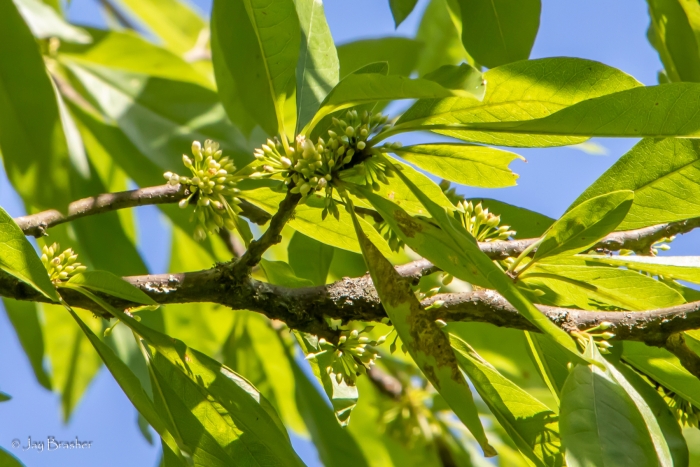Buckthorn Bully
(Sideroxylon lycioides)
Buckthorn Bully (Sideroxylon lycioides)
/
/

Jay Brasher
CC BY 4.0
Image By:
Jay Brasher
Recorded By:
Copyright:
CC BY 4.0
Copyright Notice:
Photo by: Jay Brasher | License Type: CC BY 4.0 | License URL: http://creativecommons.org/licenses/by/4.0/ | Rights Holder: Jay Brasher | Publisher: iNaturalist | Date Created: 2022-07-14T10:22:58-07:00 |

























Estimated Native Range
Summary
Sideroxylon lycioides, commonly known as buckthorn bully, is a small, deciduous to semi-evergreen tree native to dry upland forests, sandy woods, and scrub areas in the southeastern United States, ranging from Texas to southeastern Virginia. It typically grows to a height of 15-20 feet (4.5-6 meters) with a similar spread, and features a dense, rounded crown. The bark is gray and furrowed, adding textural interest to the landscape. The leaves are narrow, leathery, and dark green, providing a backdrop for the small, inconspicuous white to greenish flowers that bloom in the spring. The fruits are small, round, and turn from green to black as they mature, with a thin layer of edible pulp that is favored by birds.
Buckthorn bully is valued for its adaptability to poor soils and its drought tolerance, making it a suitable choice for xeriscaping and naturalized areas. It is also used for wildlife habitat restoration and as a buffer plant in riparian zones. In cultivation, it requires minimal maintenance once established and can thrive in full sun to partial shade, with well-drained soils being preferable. While not commonly found in the nursery trade, it can be a unique addition to native plant gardens or used as a specimen in residential landscapes.CC BY-SA 4.0
Buckthorn bully is valued for its adaptability to poor soils and its drought tolerance, making it a suitable choice for xeriscaping and naturalized areas. It is also used for wildlife habitat restoration and as a buffer plant in riparian zones. In cultivation, it requires minimal maintenance once established and can thrive in full sun to partial shade, with well-drained soils being preferable. While not commonly found in the nursery trade, it can be a unique addition to native plant gardens or used as a specimen in residential landscapes.CC BY-SA 4.0
Plant Description
- Plant Type: Shrub, Tree
- Height: 10-20 feet
- Width: 10-20 feet
- Growth Rate: Moderate, Rapid
- Flower Color: Green, White
- Flowering Season: Spring, Summer
- Leaf Retention: Evergreen
Growth Requirements
- Sun: Full Sun, Part Shade
- Water: Low
- Drainage: Fast, Medium
Common Uses
Bee Garden, Bird Garden, Erosion Control, Low Maintenance
Natural Habitat
Dry upland forests, sandy woods, and scrub areas in the southeastern United States
Other Names
Common Names: Ironwood, Buckthorn Bumelia, Southern-Buckthorn
Scientific Names: , Sideroxylon lycioides, Bumelia ambigua, Bumelia ambigua, Bumelia lucida, Bumelia lycioides, Bumelia lycioides var. ellipsoidalis, Bumelia lycioides var. virginiana, Bumelia pubescens, Bumelia smallii
GBIF Accepted Name: